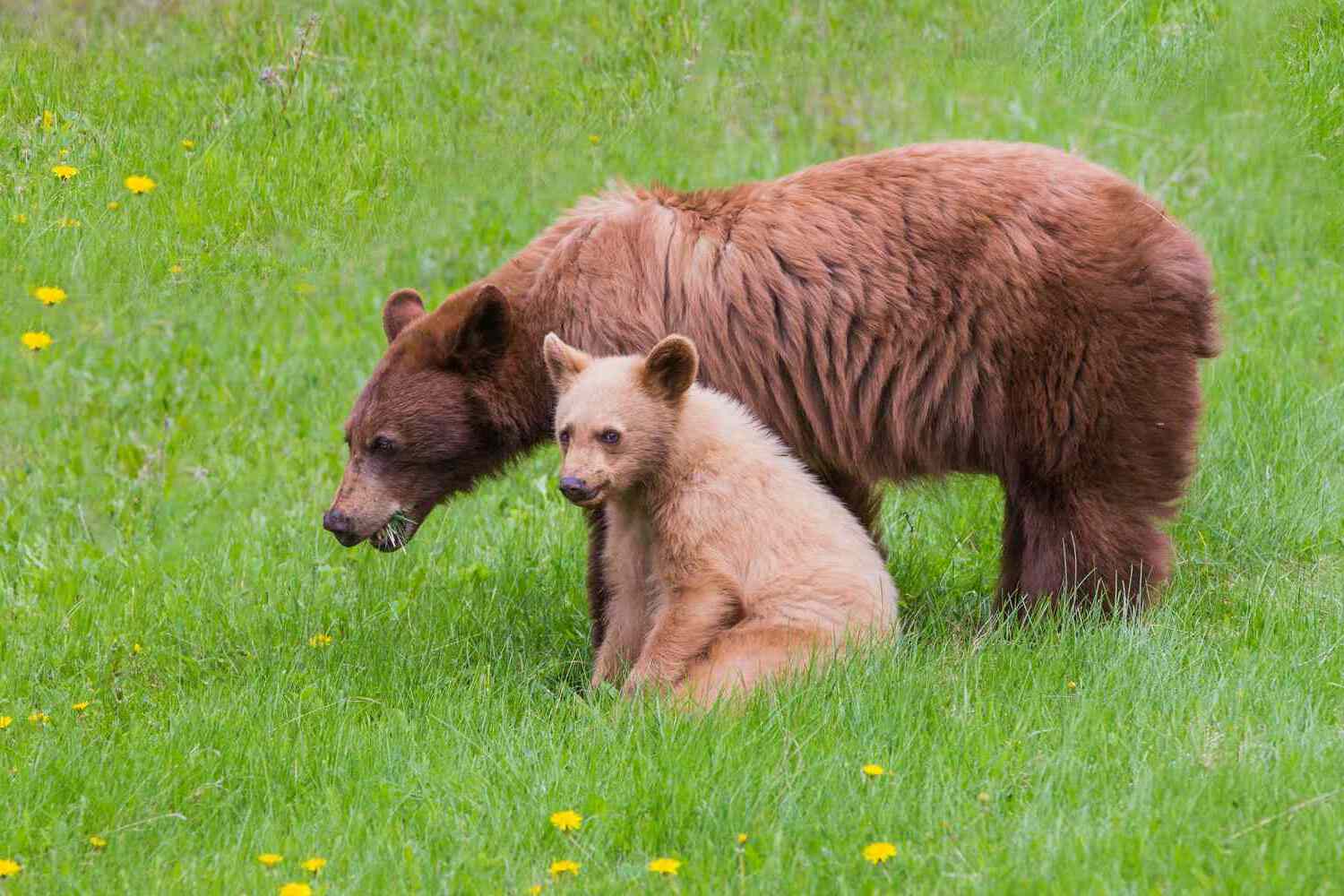
Ever wondered why bears are such fascinating creatures? Well, you're about to find out! Bears, nature's mighty mammals, have captured human imagination for centuries. From their incredible strength and surprising agility to their complex behaviors and varied diets, these furry giants hold secrets that many of us are eager to uncover. Whether they're fishing for salmon in a rushing river or hibernating through the cold winter months, bears showcase a remarkable ability to adapt and thrive in diverse environments. So, grab your gear, and let's embark on a wild adventure into the world of bears. With 20 jaw-dropping facts, we'll peel back the layers of mystery surrounding these majestic animals. Get ready to be amazed by the intriguing world of bears, where every fact is a step deeper into their awe-inspiring existence.
Key Takeaways:
- Bears are fascinating creatures with unique adaptations and social behaviors, facing threats from habitat loss and climate change. Conservation efforts and global cooperation are crucial for their survival.
- Bears symbolize strength and wisdom in culture and mythology, but they face challenges from climate change and human conflicts. Education, research, and community involvement offer hope for their preservation.
Understanding Bears: An Overview
Bears are among nature's most fascinating creatures, known for their strength, adaptability, and diverse habitats. From the icy realms of the Arctic, where polar bears reign, to the dense forests inhabited by grizzlies, these mammals have captivated humans for centuries. Let's dive into some intriguing facts about these mighty animals.
-
Bears belong to the family Ursidae, which includes eight species spread across the globe, each with unique characteristics and habitats.
-
Despite their heavy build and seemingly clumsy gait, bears can reach speeds of up to 40 miles per hour, outrunning a human with ease.
-
Omnivores by nature, their diet ranges from fish and mammals to berries and insects, depending on the species and available resources.
Bears' Adaptations and Survival Strategies
Survival in the wild demands remarkable adaptations, and bears have evolved several traits to thrive in their environments.
-
Polar bears have black skin under their white fur, which helps them absorb sunlight and stay warm in the frigid Arctic.
-
Grizzly bears, a subspecies of brown bears, possess powerful muscles in their shoulders, giving them the strength to dig up roots or break open logs for food.
-
Hibernation is a critical survival strategy for many bears, allowing them to conserve energy during winter when food is scarce. During this period, they can go for months without eating, drinking, or eliminating waste.
The Social Life of Bears
Contrary to popular belief, bears can exhibit social behaviors, especially in areas with abundant food sources.
-
While generally solitary, bears may gather in large numbers at prime feeding sites, such as salmon runs, demonstrating a complex social hierarchy.
-
Mother bears are fiercely protective of their cubs, with the maternal bond being one of the strongest in the animal kingdom. Cubs stay with their mothers for up to two years, learning essential survival skills.
-
Communication among bears is sophisticated, involving a range of sounds, body language, and scent marking to convey messages.
Conservation Efforts for Bear Populations
With habitat loss, climate change, and human encroachment threatening bear populations, conservation efforts are crucial to their survival.
-
The International Union for Conservation of Nature (IUCN) lists six bear species as vulnerable or endangered, highlighting the need for global conservation initiatives.
-
Protected areas and wildlife reserves play a vital role in preserving bear habitats and ensuring their access to natural food sources.
-
Innovative conservation strategies, such as wildlife corridors, help reduce human-bear conflicts and promote coexistence in shared landscapes.
Bears in Culture and Mythology
Bears hold significant places in the folklore and mythology of various cultures, symbolizing strength, courage, and wisdom.
-
In Native American cultures, bears are often revered as spiritual guides and symbols of bravery and endurance.
-
The constellation Ursa Major, also known as the Great Bear, has inspired countless myths and legends around the world, reflecting humanity's long-standing fascination with these animals.
-
Bears have also made their mark in popular culture, from children's stories like "Goldilocks and the Three Bears" to symbols of national identity, such as the bear on the California state flag.
The Future of Bears: Challenges and Hope
As we move forward, the future of bears in the wild hinges on our actions and commitment to conservation.
-
Climate change poses a significant threat to polar bears, as melting ice reduces their hunting grounds and access to seals, their primary food source.
-
Human-bear conflicts are on the rise as bears' natural habitats are encroached upon, leading to increased encounters with humans.
-
Education and awareness programs are essential to fostering coexistence and understanding between bears and humans, ensuring the safety and conservation of these magnificent creatures.
-
Innovative research, including tracking and monitoring bear populations, provides valuable insights into their behavior, health, and habitat needs.
-
Global cooperation and community involvement in bear conservation can make a difference, offering hope for the preservation of these mighty mammals for generations to come.
A Final Roar on Bears
Bears, nature's mighty mammals, offer a fascinating glimpse into the wild. From their diverse habitats across continents to their unique behaviors and diets, these creatures captivate our imagination and respect. Understanding bears is more than just an exercise in curiosity; it's a step towards appreciating the complexity of our natural world and the importance of conservation efforts. Whether it's the solitary giant, the polar bear, or the forest-dwelling black bear, each species tells a story of adaptation and survival. By learning about bears, we're reminded of our connection to nature and the role we play in preserving it. So, next time you're out in the wild or reading up on these magnificent beasts, remember the incredible journey they've been on and our part in ensuring their tale continues for generations to come.
Frequently Asked Questions
Was this page helpful?
Our commitment to delivering trustworthy and engaging content is at the heart of what we do. Each fact on our site is contributed by real users like you, bringing a wealth of diverse insights and information. To ensure the highest standards of accuracy and reliability, our dedicated editors meticulously review each submission. This process guarantees that the facts we share are not only fascinating but also credible. Trust in our commitment to quality and authenticity as you explore and learn with us.


